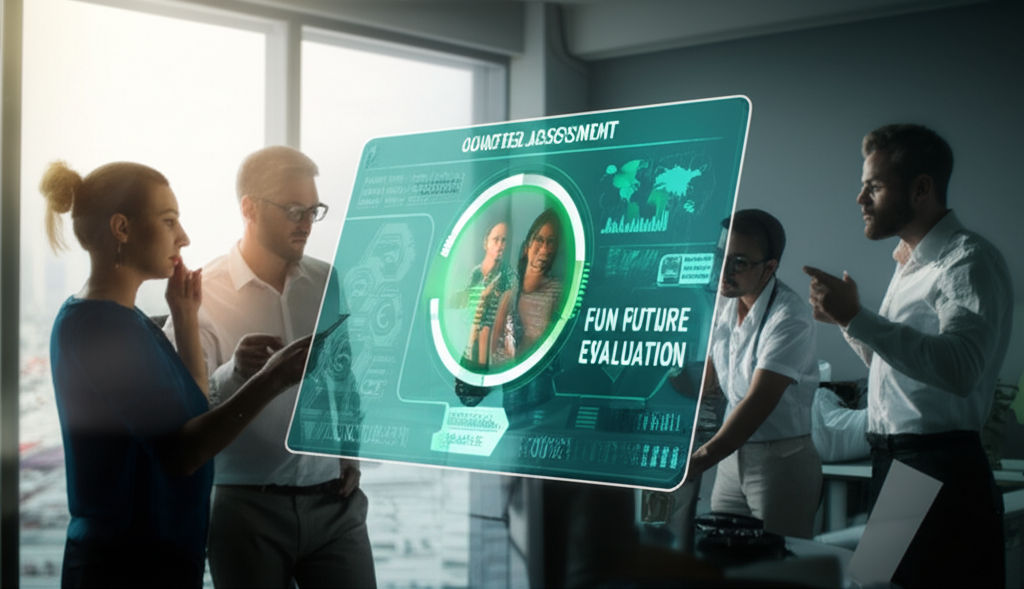Resolve Workplace Conflicts
Emily Willis

Photo: Resolve Workplace Conflicts
Workplace conflicts are an inevitable part of any professional environment, stemming from diverse personalities, communication styles, and competing priorities. While often perceived negatively, effectively resolving workplace conflicts is crucial for fostering a healthy, productive, and harmonious work culture. This comprehensive guide will explore the dynamics of workplace disputes, delve into practical strategies for their resolution, and highlight the significant benefits of a proactive approach.
Understanding Workplace Conflicts: More Than Just Disagreements
Conflict in the workplace refers to any disagreement or tension between individuals or teams within an organization. It can arise from a myriad of factors, ranging from minor misunderstandings to fundamental differences in values or goals. Unresolved workplace conflicts can significantly impact productivity, morale, and overall organizational culture, leading to increased stress, decreased job satisfaction, and even higher rates of absenteeism and turnover.
Common Causes of Workplace Conflict
Identifying the root causes of conflict is the first step toward effective resolution. Conflicts often stem from various triggers:
- Poor Communication: Misunderstandings, lack of clarity, or insufficient information can easily lead to conflict.
- Differing Values and Personalities: Clashes in personal values, work styles, or personality traits are frequent sources of tension. For instance, one employee might prefer constant communication and collaboration, while another thrives in independent work with minimal interruptions.
- Unclear Roles and Responsibilities: Ambiguity about job duties, reporting lines, or project ownership can lead to overlap, confusion, and resentment.
- Competing Priorities or Goals: Especially in cross-functional teams, differing departmental or individual objectives can create friction.
- Limited Resources: Competition for budgets, promotions, recognition, or even office space can generate tension.
- Workload and Stress: Excessive workloads, tight deadlines, and high-pressure environments can increase stress levels and trigger conflicts.
- Poor Management and Leadership: Inconsistent management styles, lack of support, unfair treatment, or favoritism can breed resentment and conflict.
- Cultural or Generational Differences: Diverse backgrounds can lead to variances in communication style, work-life balance expectations, and ethical approaches.
- Perceived Inequity or Favoritism: Real or perceived bias in treatment or opportunities can ignite disputes.
The Impact of Unresolved Conflict
Ignoring workplace conflict is a risky approach that can lead to significant and sometimes irreversible damage. The consequences extend far beyond the immediate parties involved, affecting the entire organization:
- Decreased Productivity and Work Quality: Unresolved conflict detracts from work, causing employees to become distracted and unfocused.
- Increased Stress and Anxiety: Tension creates an environment of unease, making it difficult to concentrate and potentially leading to severe mental health issues like anxiety and depression.
- Lowered Morale and Job Satisfaction: A workplace riddled with conflict often breeds negativity, mistrust, and disengagement, leading to employees dreading coming to work.
- Higher Absenteeism and Turnover: Employees may call in sick more often or even leave their jobs to escape a hostile work environment. Studies indicate that nearly two-thirds of U.S. workers have experienced incivility at work, and 23% have left a job due to workplace conflict.
- Damaged Reputation: Companies that fail to address conflict risk their reputation, making it harder to attract and retain talented individuals.
- Financial Costs: Managers can spend a significant portion of their time—up to 42%—dealing with conflict, diverting focus from core responsibilities. The cost of recruiting and training new employees due to turnover can also be exorbitant.
The E-A-T Approach to Conflict Resolution
To effectively resolve workplace conflicts and build a positive environment, it's essential to approach the situation with Expertise, Authoritativeness, and Trustworthiness (E-A-T). This means demonstrating a deep understanding of conflict dynamics, having the credibility to guide the resolution process, and fostering an environment where all parties feel safe and heard.
1. Expertise: Understanding the Nuances of Conflict
Expertise in conflict resolution means understanding that conflict is not always negative; when managed properly, it can promote critical thinking, new ideas, and team-building skills. It also involves recognizing different conflict management styles, such as Avoiding, Accommodating, Competing, Compromising, and Collaborating, and knowing when each is appropriate. The collaborative approach, aiming for win-win solutions, is often the most constructive.
2. Authoritativeness: Guiding the Process Fairly
Authoritativeness comes from the ability to guide the conflict resolution process impartially and effectively. This often falls to leaders and HR, who must be equipped with the necessary skills and training. A strong authority figure can set clear expectations and boundaries, ensuring that discussions remain professional and focused on solutions, not personal attacks.
3. Trustworthiness: Building a Safe Space
Trustworthiness is paramount. For conflict resolution to be successful, all parties must trust the process and the individuals facilitating it. This means creating a safe space where individuals feel comfortable sharing their perspectives without fear of misunderstanding, penalty, or dismissal. Confidentiality, active listening, and a commitment to fairness are critical in building this trust.
Practical Strategies to Resolve Workplace Conflicts
Resolving workplace conflicts effectively requires a blend of communication skills, empathy, and structured approaches. Here are actionable steps and strategies:
1. Identify Workplace Conflict Early
Conflict often begins with subtle cues like passive resistance, miscommunication, or changes in body language. The sooner these signs are recognized, the easier it becomes to de-escalate the situation. Managers who intervene early prevent emotional buildup and reduce gossip.
- Look for subtle signs: Unusually quiet team members, avoidance of eye contact, or pulling back from group discussions can indicate brewing tension.
- Encourage open feedback: Create channels for employees to voice concerns before they escalate into full-blown conflicts.
2. Create a Safe Space for Dialogue
Fear is a significant barrier to resolving conflict. A neutral, private setting is crucial for open and respectful conversation.
- Choose a neutral setting: A quiet meeting room for in-person discussions or a private 1:1 video call for remote setups.
- Set ground rules: Emphasize respectful communication, active listening without interruption, and a focus on understanding each other's perspectives rather than winning an argument.
3. Practice Active Listening and Empathy
Effective conflict resolution hinges on truly hearing and understanding the other person's perspective.
- Listen to understand, not to respond: Focus on what the other person is saying, both verbally and non-verbally (facial expressions, posture, tone of voice).
- Paraphrase and clarify: Rephrase what you've heard to ensure accurate understanding and to show the other person they've been heard. For example, "So, you're saying that..."
- Avoid interrupting: Allow the other person to express themselves fully.
- Show empathy: Try to see things from their point of view and acknowledge their feelings.
4. Focus on Issues, Not Personalities
Directing the conversation toward the specific problem rather than personal attacks is vital for productive conflict resolution.
- Define the problem: Ask all parties to articulate the problem clearly.
- Use "I" statements: Encourage individuals to express how they feel and what they need, rather than using accusatory "you" statements. For example, "I feel frustrated when X happens" instead of "You always do X."
- Avoid blame: Create an environment that doesn't place blame on one specific person.
5. Explore Solutions Collaboratively
Once the issues are understood, the focus shifts to finding mutually agreeable solutions.
- Brainstorm solutions: Encourage all parties to contribute ideas, aiming for win-win outcomes or compromises where everyone gives up something to reach a middle ground.
- Discuss pros and cons: Evaluate each proposed solution and its potential positive and negative aspects.
- Identify common ground: Look for shared interests or goals that can serve as a foundation for resolution.
6. Consider Mediation When Needed
For complex or deeply entrenched conflicts, a neutral third-party mediator can be invaluable. Mediation is a voluntary and confidential process where an impartial person helps team members resolve their disagreements.
- The Mediation Process:
- Initial Assessment: The mediator meets individually with each party to understand their perspective, issues, needs, and feelings
Latest ✨
View AllDitch stressful tests! Gamified assessment makes evaluations fun, fair & future-ready. Unlock true potential with engaging, insightful methods.
Emily Willis
secrets to mastering your business financial plan with five simple steps. Learn how to analyze financial data, set measurable goals, and create a comprehensive strategy for success. Unlock profitability, make confident decisions, and ensure a bright future for your business
Emily Willis
Europe is full of rich culture, with ten cities offering enriching cultural experiences. From the romance of Paris to the splendor of Rome and the artistic flair of Barcelona, each city has its own unique charm and heritage.
Emily Willis
invitation to go on a wildlife safari through Kenya, Tanzania, and Australia. It describes the unique wildlife encounters in each country, such as witnessing the Great Migration in Kenya, exploring the Serengeti in Tanzania, and encountering koalas and kangaroos in Australia.
Emily Willis
Business
View All
June 9, 2025
Innovation Strategy for Future BusinessInnovation is vital for future business success. Learn why a robust strategy ensures survival, growth, and competitiveness in a changing world.
Emily Willis

June 8, 2025
Importance of Corporate GovernanceCorporate governance isn't just for boardrooms. Understand its vital role in ethical business, trust, and sustainable growth for all stakeholders.
Emily Willis

June 9, 2025
Succeed with SaaS Business ModelMaster the SaaS business model! This guide reveals strategies for building a thriving enterprise, from understanding the landscape to achieving product-market f...
Emily Willis
Economy
View AllUnpack the immense power of central banks and how they're held accountable for shaping the economy and your financial life.
Read MoreTechnology is now an integral part of our daily lives and economies, driving innovation, boosting productivity, and fueling economic growth. It streamlines research and development, facilitates collaboration, automates mundane tasks, and democratizes innovation.
Read MoreThe inflation threat explained. Understand its causes and discover effective cures to protect your purchasing power and navigate economic challenges.
Read MoreEntertainment
View All
August 5, 2024
Classic Films: Timeless Masterpieces in the Age of StreamingClassic films may seem outdated in today's world of instant gratification and endless streaming options, but they offer enduring stories, masterful storytelling, historical insights, technical innovation, and artistic value that surpass modern offerings. While classic films face challenges such as accessibility and pacing, there are ways to overcome these obstacles, such as using streaming services, visiting local libraries, attending film festivals, and utilizing online resources.
Emily Willis

August 4, 2024
The Latest Music Trends, Artists Influencing Pop Culture, and How Digital Platforms Facilitate the Distribution of Music GloballyThe music industry is constantly changing due to consumer preferences, technology, and the influence of artists. Digital platforms have revolutionized music creation, distribution, and consumption, leading to genre fusion, the rise of independent artists, and collaborative projects. Influential artists like Billie Eilish, BTS, and Taylor Swift have shaped pop culture globally. Streaming services, social media, and direct-to-fan engagement have transformed music distribution. Digital platforms also promote cultural diversity and inclusivity, expand markets and revenue, and drive technological advancements. The industry is also focusing on sustainability and ethical practices. To succeed in the future, stakeholders must embrace digital transformation and champion inclusivity.
Emily Willis

August 5, 2024
Entertainment in Society: Social Impact, Cultural Influence, Economic ContributionsEntertainment is more than just a way to pass the time it has a significant impact on society, culture, and the economy. It promotes empathy, sparks conversations, and drives social change. It reflects and shapes cultural trends, while also preserving traditions. The entertainment industry generates jobs, contributes to economic growth, and drives technological innovation.
Emily Willis
Health
View AllRegular exercise is essential for maintaining both physical and mental health. It helps with weight management, cardiovascular health, muscle strength, energy levels, and sleep quality. Exercise also reduces stress and anxiety, improves mood, cognitive function, and self-esteem, and lowers the risk of depression. Different types of exercises, such as aerobic, strength training, flexibility, balance, and mind-body exercises, contribute to overall health. To start and maintain an exercise routine, it is important to start slowly, set realistic goals, find enjoyable activities, stay consistent, and listen to your body.
Emily Willis
Maintaining good health involves a balanced diet that provides essential nutrients for the body. A balanced diet includes carbohydrates, proteins, fats, vitamins, minerals, fiber, and water. Benefits of a balanced diet include enhanced energy levels, improved mental health, a stronger immune system, better weight management, reduced risk of chronic diseases, and enhanced digestion. Components of a balanced diet include fruits and vegetables, whole grains, protein sources, dairy or dairy alternatives, and healthy fats. Tips for maintaining a balanced diet include planning meals, portion control, staying hydrated, limiting processed foods, eating mindfully, and including physical activity.
Emily Willis
sleep for physical and mental well-being, discussing the benefits of sleep such as physical restoration, brain function, emotional regulation, concentration, and reduced risk of chronic diseases. It explains the different stages of the sleep cycle and provides guidelines for how much sleep individuals of different ages need.
Emily Willis
Trending 🔥
View All
1
2
3
4
5
6
7
8
9
10
Sports
View AllAugust 5, 2024
Celebrating Sports Legends: Honoring Iconic Figures and Their Enduring Impact
Read MoreAugust 4, 2024
The Importance of Mental Training and Psychological Strategies in Helping Athletes Reach Their Peak Performance on the Field
Read MoreTechnology
View All
August 4, 2024
AI-Powered Robots Take Over Manufacturing Jobs: Is Our Workforce Prepared?
AI-powered robots are transforming the manufacturing industry, leading to increased efficiency and improved product quality. While concerns about job displacement exist, AI is more likely to transform jobs rather than eliminate them.

August 5, 2024
Challenges and Opportunities in Implementing IoT Technology
The Internet of Things (IoT) is revolutionizing industries by enabling real-time monitoring, automation, and decision-making. However, implementing IoT technology comes with challenges such as security concerns, interoperability issues, data management, scalability, and cost. Despite these challenges, IoT offers opportunities for operational efficiency, enhanced customer experience, innovation, environmental sustainability, and business intelligence.

August 5, 2024
Tips for Keeping Your Personal Data Safe on the Internet
The digital age has made personal data more vulnerable to threats such as phishing, hacking, identity theft, and data breaches. To protect yourself, it is important to create strong passwords, be cautious of phishing attacks, secure your devices, safeguard your personal information online, practice safe online shopping and banking, protect your social media accounts, and stay informed about cybersecurity threats.

August 5, 2024
The Future of Cybersecurity and Upcoming Challenges
cybersecurity in the digital age, highlighting key trends and challenges that will shape the future of cybersecurity. It addresses issues such as the increased use of AI and ML, the growth of IoT devices, ransomware attacks, cloud security, and supply chain attacks. It also outlines upcoming challenges in cybersecurity, including talent shortage, regulatory compliance, cybersecurity for remote work, quantum computing, and social engineering attacks.





















